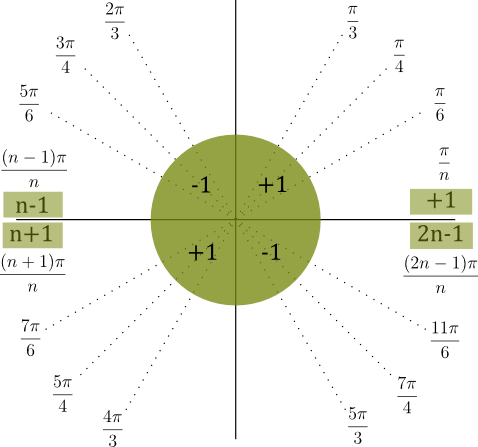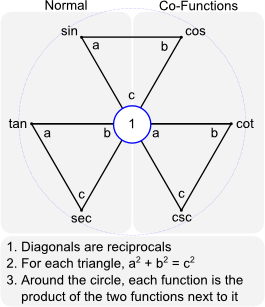If you have difficulty remembering where the standard angles are, there is a simple way to do so.
First, remember that we are talking about the /6, /4, and /3 angles only. The /2 angles (0, π/2, π, and 3π/2) don’t fit into this method very well, and other angles (eg π/12, 5π/12) don’t work at all.
Second, note that there is only one of each of the /6, /4, and /3 angles in each quadrant.
Third, there is a pattern that each of the quadrants follows based on the angle you are trying to locate. Quadrant I is easiest – it is always just π over the denominator. For example, Quadrant I has π/6, π/4, and π/3. Quadrant II has a numerator one less than the denominator, 2π/3, 3π/4, and 5π/6. Quadrant III has a numerator one more than the denominator, 7π/6, 5π/4, and 4π/3. Quadrant IV has one less than twice the denominator, 5π/3, 7π/4, and 11π/6. So for Quadrants I, II, III, and IV, the pattern is +1, –1, +1, –1. This is summarized in the following chart:

